Posted on 9/16/2019
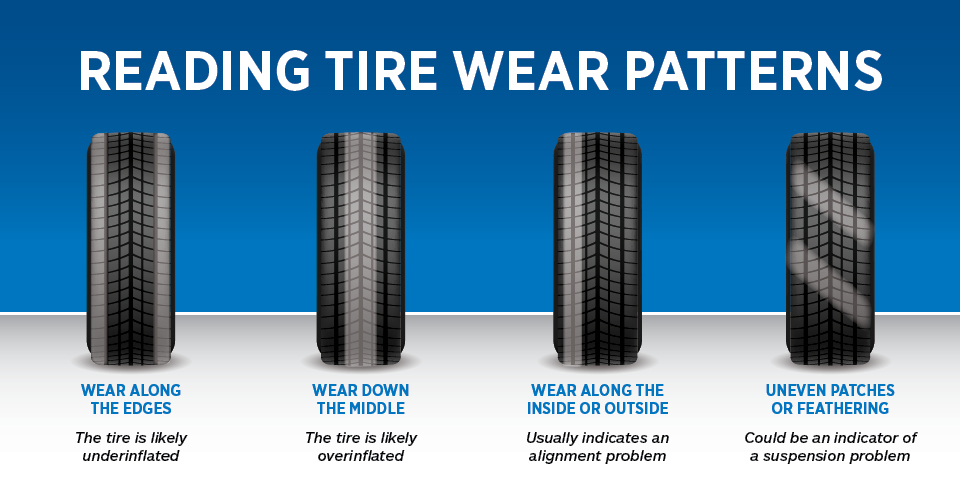
When is it time to replace your tires? You’ll want to partner with your auto repair experts to get the most out of your tires. If you properly care for your tires, not only will you get better gas mileage, but you’ll be able to get many more months and miles out of them before having to invest in a new set. Take a look at the photo below to see signs of a problem before it gets any worse. Here are some tips on what to look for and how to get the most out of them: Get in the habit of looking for wear and tear on your tires. The more you know your tires, the easier it will be to identify a problem. Regularly check the air pressure in your tires and when you do that, take that time to give the rest of your tire a once over. Inspect the tire tread depth and wear. Use a penny to help you assess the depth. If you can’t see Lincoln’s head because it’s well nestled into a deep tread, you’re good to go. If it’s completely exposed ... read more
Posted on 4/29/2019
According to AAA, 20% of Americans don’t know how to change a flat tire and 81% of the correspondents have experienced a flat tire so, unfortunately this is something most drivers will face. Even if you know how to change a flat tire, it’s not as habitual as pumping gas or washing your car. So, whether you’ve never changed a tire or need a refresher, it’s time to get up to speed on fixing a flat. You never know when you’ll end up stranded on the side of the road with no cell service! Here’s an easy 7 step guide to get you back on the road after a flat tire. 1. Find a safe spot When you initially realize you have a flat tire, don’t freak out by braking or turning suddenly. Instead, slow down and look for a safe place to pull over to assess the tire. Wide shoulders and parking lots are preferable options. Be sure to turn on your hazard lights so that other drivers are aware of your road emergency. This will keep ... read more
Posted on 1/23/2017
This a question we get so often from our customers, we thought we might lay out the pros and cons for you so you can make the best decision for your car and budget. All Season Tires The two words we would use to describe All-Season tires are convenience and compromise. Living where the weather isn’t very harsh on either end of the spectrum, not a lot of snow, no blistering summers, is an ideal location to drive on All Season tires. Most locations meet this specification. These tires are sturdy, go-to options for your vehicle year round. This is a blessing for those on tight budgets too. No changes or extra sets necessary- although you definitely want to keep chains in your car just in case weather calls for it. Which highlights the second point about All Season Tires: the compromise. All-Season tires are incredibly well balanced, with treads designed to accommodate smooth driving in the Summer months, and rainy or icy driving during Winter. They are an excellent option. Howev ... read more
Posted on 12/12/2016
We think our tires only last up to 2 years maximum, but we are completely wrong. Tires can, in fact, with proper care and storage, can last up to an incredible ten years. The team at Robert’s Collision and Repair has put together a list of the best-kept secrets of tire maintenance: Exposure to UV rays shortens the lifespan of your tires. Keep them inside as much as possible. Inspect your tires and rims every month. Make sure to look out for cracks in the sidewall, along with continually monitoring your tread depth. The appropriate amount of tread depth will depend on where you live and your climate. If it is rainy or snowy, you will need a different tread depth, compared to someone who lives in a sunny and humid climate. Ask us about the appropriate tread depth for your tires. Overall, keep your tires away from sunlight, ozone, an environment with a stable temperature as much as possible. If you follow the tips listed above, your tires should last approxi ... read more
Posted on 5/27/2015
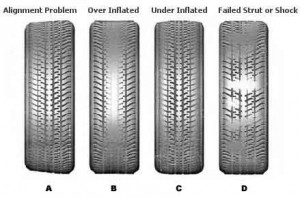
Not sure when you replace your tires? Here are some tips that will help you determine when your tires should be repaired or replaced. Step 1: Check your tires periodically for wear. We understand that you probably don’t look at your tires very often, but it’s a good habit to get into. If you look at them regularly, you will have an easier time discerning whether the tires are in good shape or if a problem is developing. Step 2: Recognize what’s going on with your tire wear. Do any of your tires look like this? If yes, it’s time to replace your tires. Step 3: How is the tire tread holding up? If you can stick a penny in between the tire tread and Lincoln’s head is covered, your tires still have plenty of tread. However, if you stick the penny in between the tread and you can clearly see Lincoln’s head, your tires need to be replaced. Step 4: Do you see any signs of bubbling, cupping, or bulging in your tires? If yes, your tires are at risk of blowing ou ... read more
Posted on 5/18/2015
Everyone should know how to change a tire, even if they are lucky enough to never have to. Knowing how to change a flat tire is one of those life skills that is right up there with knowing how to administer CPR, and knowing how to swim. Even if you already know how to change a tire and it has been a while since you have had to do it, here is a helpful reminder. Step 1: Pull over to a safe spot off the road. Try to head for a well lit area that is far enough away from moving traffic. Step 2: Turn on your hazard lights. Not only will this safety feature let other drivers know that your vehicle is stranded, but it may also summon help from other passersby. Step 3: Look for the tire changing tools in your vehicle, often stored near the spare tire in the trunk area. Grab the wrench and use it to loosen the lug nuts on the tire. Step 4: Use the jack to lift the vehicle off the ground. Follow jack directions accordingly to ensure safety. Step 5: Remov ... read more
Posted on 2/2/2015
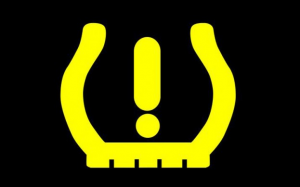
Did you know that your tires lose pressure daily? In warmer weather, your tires lose even more pressure. With summer and spring approaching, it is important to know what the correct tire pressure actually is for your car. Basically, correct tire pressure depends on the model of your vehicle. These details should be listed somewhere on vehicle: Check the following spots: Door edge Door post Glove box door Fuel door We also recommend checking your vehicle's tire pressure every time you get gas. Don’t forget to check your spare tire. You just never know what might happen. There are also definitely some benefits of properly inflated tires: The tires will last long longer. Your car will drive noticeably safer. Save money at the pump. Robert’s Collision & Repair will be happy to take a look at your tires, and make sure they are properly inflated. If you have questions or concerns about your car, please call us at 831-373-1534, or visit our 26,000 sq. ft. facility at 234 Ra ... read more
Posted on 9/14/2014
Most drivers take their tires for granted until there is a problem, like a flat or worn tread. However, ignoring your tires can become a major safety issue because tires are your vehicle’s only contact to the road. Not only should you pay attention to your tires, but you should also learn the difference between good tires and bad tires, cheap tires and expensive tires, sizes of tires, and the best tires for the conditions you drive in. But first, let’s discuss the importance of buying good tires: Good tires last longer. Good tires may not be the least expensive, but they offer better value. Good tires come with a warranty. Good tires play a big role in your safety, so don’t be “penny-wise and pound foolish”. Some vehicles, like Hondas, have plenty of good tire options, while others, like the Mini Cooper Countryman, requires special sized run-flat tires. If you are unsure what kind of tires to put on your vehicle, the Robert’s Collision & Repair team will be happy to steer you to ... read more
Posted on 1/13/2014
Some people forget to change their tires. Others are better about getting regular tire service. Here are the top five reasons to change your tires: Your tread is less than 1/16 inch or 1.6 millimeters thick. Your tires should always have more than a depth of 1/16 inch tread, ideally at a thickness of 1 inch of tread depth. If your tread wear indicator bars are exposed, your tires need to be replaced. Tread wear indicators are parallel bars that run perpendicular to the direction of the tread. Replace your tires if they have cracked and weathered side walls. Cracked and weathered side walls are bad news, showing that the strength of the tire is breaking down. Bulges and blisters on the tires are really bad news, for they indicate a potential blow out. Blow outs are a cause of some major accidents, so never let your tires get to the point of having bulges and blisters. If your tires have too much vibration, it is yet another sign that something isn’t quite right with your tires. At ... read more
Posted on 2/25/2013
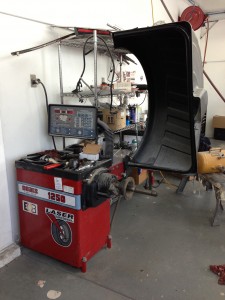
Who knew that a tire balancing machine at Robert’s Auto Repair could be so high-tech with a 3-D laser guided operation? In today’s world with amazing technology, no longer do tire pros have to eyeball a wheel for precise tire balancing precision. Our team has the state-of-the-art equipment to balance even the toughest set of wheels. Here are some of the things our tire balancing machine can do: It has a 1.5 hp direct drive motor running it. It has 8 balancing modes. The laser guided operation eliminates error by pinpointing the exact Tape-A-Weight placement and behind the spoke weight placement locations. It comes with a hood that helps the tire balancing process. Automatically indexes the wheel to the second weight position and holds again... with a push of a button. What do all these features mean to you? Our tire pros can quickly and efficiently balance your tires and get you back out on the road in a jiffy. If you need your tires rotated, balanced, or aligned, please come see us a ... read more
Posted on 2/19/2013
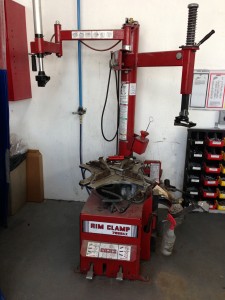
We don’t know if you’re aware of this, but there are tire changer machines that some tire professionals would prefer to work with over others. Lucky for us, Robert’s Auto Repair uses state-of-the-art equipment, and we would even go so far to say that our tire changer machine is a “workhorse”. Here are some of the features that make us love our tire changing machine: It handles big wheels and small wheels. It protects expensive wheels. It helps us work more effectively and increases our productivity levels. It is adaptable and can change as tire standards change. Now that you know that we have the best equipment, don’t be shy about contacting us if you need your tires changed. If you need assistance with your tires or wheel alignment, contact us to schedule an appointment. Robert’s Auto Repair is located at 234 Ramona Avenue, Monterey, CA 93940. Mechanical -- 831-373-1534
Body Shop -- 83
Posted on 2/4/2013
During the winter, it is very, very important that your tires are in tip-top shape. If your tires are showing excess wear and tear, or are bald in certain spots, your safety on the road is greatly compromised. When in doubt, come to Robert’s Auto Repair for a tire inspection. If your tires are in good shape, but not perfectly balanced, we can keep things rolling smoothly with our tire alignment service. If your tires need to be fixed or replaced, we have the capacity to replace your tires quickly, without killing your budget. Even if your tires are in perfect condition and you’d like us to add some air for you, we’ll be happy to do it for you. Your safety is our priority, and that is why we cannot stress enough how much we want your tires to be in great shape when they carry you down the highway. Call today to schedule a tire inspection and replacement at our 26,000 square foot facility, located at 234 Ramona Avenue, Monterey, CA 93940. You will be very glad you did! Mechanical ... read more
Posted on 4/9/2012
Have you noticed how often it is that people don’t give enough attention to their tires? It seems very common, but ignoring your tires is can become a major safety issue. Why? Because tires are your car’s only contact to the road. No matter how good an engine your car has, how good a construction it has , what basic speed and acceleration it has, in the end it all comes down to tires and how they can alter your car’s performance on the road. Not only should you pay attention to your tires, but you should learn the difference between good tires and bad tires, cheap tires and expensive tires, sizes of tires , and the seasons and conditions your tires are made for. Here’s a quick list of things to look out for when choosing tires: 1. Make sure you’re choosing the proper size of tires. A wrong size of tires can mean everything from a slight discomfort to a serious safety issue. Tire sizes are usually indicated in your car’s manual. If you lost yours or you got a bargain car from somewhere ... read more
Posted on 11/29/2010
For those of you who think that tire balancing isn't that important, consider some industry trends that may help you rethink the issue. Perhaps the most compelling argument for precision balancing comes from an obvious fact: vehicles are being made lighter and lighter. The heavier cars of yesterday actually helped smooth out the ride by dampening many vibrations before the driver could feel them. The softer suspensions also had the same effect. Another factor is tire technology. Generally, more responsive tires with lower profiles (which send more road feedback to the driver) are being used in today's style- and performance-oriented market. As a result, the slightest imbalance (as little as half an ounce) can be felt in most modern vehicles. This is significantly less than the average of ten years ago. For those of you who have plus-sized your tires and wheels, balancing is even more critical. Perhaps the best way to begin is to discuss the lack of balance. When a tire ... read more
Posted on 11/1/2010
Tires are often the most taken-for-granted part of the car. They get kicked, worn, and they eventually go bald. However, tire safety is extremely important if you want to protect yourself from common road hazards. This month, we will start to experience the “First Flush” of rainstorms and slippery roads. “First Flush” conditions often cause vehicles to hydroplane more easily because the oil has not yet been fully washed off the roadway and the tires don’t grip as well they would in normal wet weather conditions. Don’t forget about your treks up into the mountains for skiing. You’ll not only come across possible rain, but also heavy or light snow, black ice, hail, and other winter weather. Are your tires in good enough shape to handle these weather conditions? It is dangerous and illegal to drive a vehicle with extremely worn or damaged tires. Tires must have at least 2/32 inches of tread depth in the proper grooves and no fabric breaks or exposed cords. The distance between the e ... read more
Posted on 5/23/2010
The Unsung Heroes: Tires We often take tires for granted. We run them through mud, rocks, snow, and sand. We kick them and curse at them when they go flat. No wonder they're tired! Tires are often the most underappreciated part of our vehicles. Like our feet, we don't pay much attention to them until something goes wrong. At CARSTAR Robert's Collision, we understand the critical role tires play in your vehicle's performance and safety. While our primary focus has shifted to auto body and paint repair, detailing services, and helping customers navigate insurance claims, we still believe in the importance of tire maintenance and safety. After all, your tires are the only part of your car that touches the road. Our Commitment to Safety Our priority at CARSTAR Robert's Collision is your safety. While we specialize in collision repair, our ultimate goal is to prevent accidents in the first place. This is why we emphasize the importance of tire maintenance as a key as ... read more